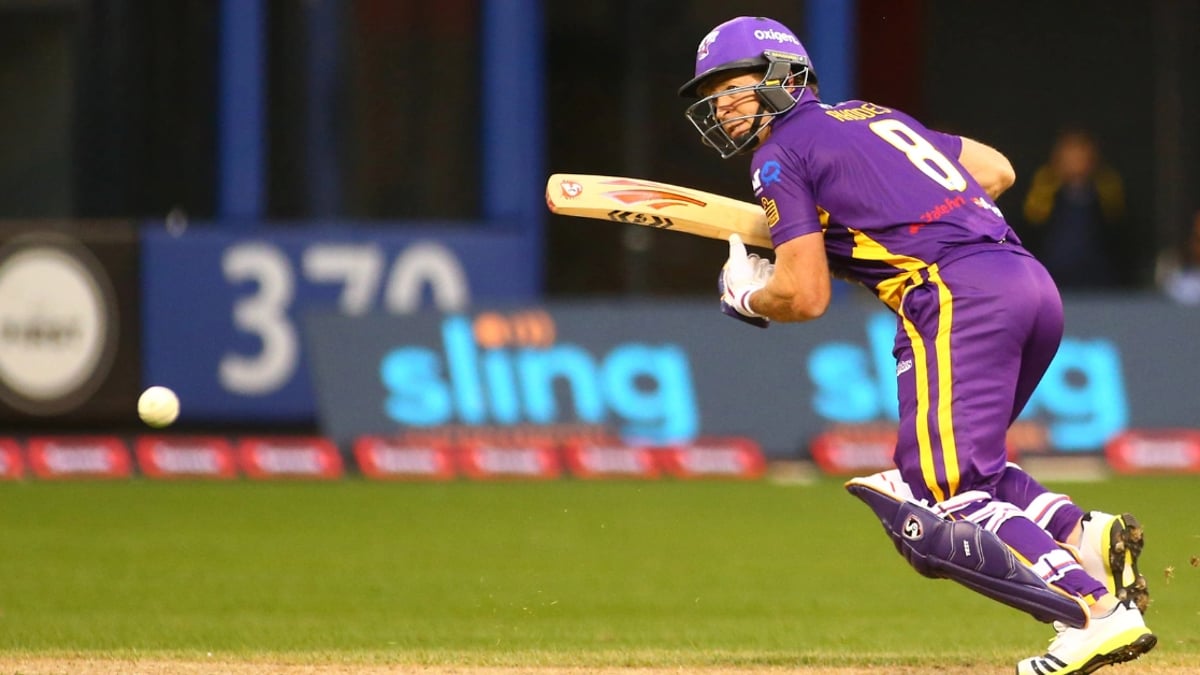Test Cricket Betting: Strategy, Tips, and Rules

- #ad. 18+. Gamble Responsibly. Gambleaware.org. Must be 21+ and present in OH. Gambling Problem? Call 1-800-GAMBLER
For cricket purists, Test match cricket remains the pinnacle of the game. Contested by the best international teams and scheduled for five days, Test matches offer a unique ebb and flow, making them a popular choice for bettors.
To bet effectively on Test action, it's crucial to tailor your strategy specifically to this version of the historic bat-and-ball game. This test cricket betting guide explains comprehensive strategies, emphasizing factors to consider, betting markets, and other concepts.
What You Need to Know about Test Cricket Betting
Test cricket may be slower-paced than limited-overs formats, but it offers numerous betting opportunities before the coin toss and in-play.
The core difference between Tests and limited-overs cricket is the emphasis on taking and preserving wickets, rather than solely on runs. While a high-scoring over might be decisive in a limited-overs match, it's less significant in a Test.
Batters generally take more risks now, influenced by the growth of Twenty20 (T20) cricket. This has led to increased scoring rates and more wickets falling, meaning more results and fewer Test matches extending to the fifth day, with batting collapses and innings defeats becoming more common.
Captaincy is significant in Test cricket betting. An aggressive captain might pursue a victory over a draw by using attacking field settings or declaring sooner to advance the game. A more defensive skipper will accumulate more runs to minimize the chance of defeat, though this might also reduce their team’s victory probability. Understanding a captain's likely approach to a game situation is crucial for predicting the match outcome.
Test Cricket Betting Rules
Generally, top run-scorer and wicket-taker bets are for the first innings only, unless a sportsbook specifically states Match Runs for a batter.
Bets will be voided if fewer than a certain number of overs are possible due to weather or other external factors; these specific conditions vary between sportsbooks, so always check.
Dead heat rules apply in several match bets when a tie is not explicitly quoted as an option.
Beyond individual match markets, a wide range of futures/ante-post betting markets are also available, such as series score, top team run-scorer/wicket-taker for the entire series, and top series run-scorer/wicket-taker.
The Basics of Test Cricket
The first-ever Test cricket match between England and Australia took place in 1877. It remained the sole form of international cricket until one-day internationals began in 1971, followed by the advent of T20 in recent years.
Test cricket is played exclusively between international teams with Test status and spans five days. Each side is scheduled to bat twice, with a coin toss determining who bats first.
Unlike limited-overs cricket, there are no fielding restrictions, except that no more than two fielders can be behind square on the leg side to prevent excessive short-pitched bowling.
A Test match day consists of three two-hour sessions. The traditional red ball is used, and it is known for offering bowlers significant movement in the air (swing).
A team can declare their innings if they believe they have scored enough runs or wish for their bowlers to attack the opposition's opening batters. Even an hour at the end of the day can be enough to take crucial wickets and decisively influence the match.
If the team batting second trails their opponent’s first-innings total by 200 runs or more, the team in the lead can enforce the follow-on, requiring them to bat again immediately. This means the team that batted first will also bat last and chase a score, unless the team following on fails to draw level at least and suffers an innings defeat.
If, after five days, neither team has secured a win (meaning the team batting fourth, or third in the case of a follow-on, has not been bowled out or passed the victory target), the match is a draw. A tie occurs if the team batting last is bowled out with the aggregate scores tied; this has happened only twice in Test cricket history.
A match that ends with a team winning is sometimes referred to as a "result," and a pitch that encourages a decisive outcome is known as a “result pitch.”
Test Cricket Betting Markets
- To Win the Toss: Simply betting on which team will win the coin toss before play begins.
- Match Odds: Prices are offered for all three possible outcomes: Team A wins, Team B wins, and the draw.
- Draw No Bet (DNB): You get your money back if the match is a draw
- Double Chance: This is similar to DNB, but it covers odds for one team and the draw.
- First Innings Lead: Bet which team will lead after the first innings. Some sportsbooks may price up a tie, while others apply dead heat rules.
- Highest Opening Partnership: Bet which team will achieve the highest opening stand in the first innings. Like First Innings Lead, tie or dead heat rules may apply.
- First Wicket Method: Odds are provided for six dismissal methods: caught, bowled, lbw (leg-before-wicket), run-out, stumped, and others. Once the match begins, the first wicket method becomes the Next Wicket Method. Some sites offer a two-way market: caught or not caught.
- First Ball of the Match: Bet what will happen on the first ball of the match. Options include a dot ball, various run scores (excluding five), bye or leg bye combined, wicket, wide, and no ball.
- First Over Runs: An over/under market, typically set with a run total like 1.5. The Next Over Runs market applies in-play for all subsequent overs.
- Score at Fall of First Wicket: This is an over/under market. Once the first wicket falls, it becomes Score at Fall of Next Wicket in-play.
- Wicket in the First Over? This simple yes/no market transitions to ‘Wicket in Next Over?’ once play begins.
- Top Team Run-Scorer/Wicket-Taker: Pick which player will be their team's top run-scorer or wicket-taker in the first innings. Dead heat rules apply in case of a tie, and players selected who do not bat/bowl are considered losers.
- Top Bowler: Some bookmakers offer this market instead of the top wicket-taker. If multiple bowlers take the same number of wickets, the winner is determined by who concedes the fewest runs.
- Player Performance: This is an over/under market where players are priced based on their overall achievement in the match. The scoring system typically awards 1 point per run scored, 10 points per catch, 20 points per wicket, and 25 points per stumping. No points are awarded for run-outs.
- Hundred in the Match: A yes/no market on whether any batter will score a hundred in the entire match. Some sportsbooks also offer a 50 in the Match market.
- Player of the Match: Betting on who will receive the official Player of the Match award after the Test match concludes.
Test Cricket Betting Tips & Strategies
While knowing what a "good score" is is impossible until both teams have batted, bettors should avoid snap judgments about a team batting first. Instead, it's wise to analyze factors like the accuracy of the bowling or how helpful the pitch was to understand a team's score.
Here are key tips to enhance your Test cricket betting:
Watch Matches with Live Streaming
Signing up for a betting site account can provide access to live cricket streams, essential for understanding team scores and how a total was achieved.
By watching the action unfold live, you can discern whether a high score was due to ideal batting conditions, an inspired performance by batsmen, or a combination of factors.

Find In-Play Test Cricket Betting Value
Test cricket matches, despite lasting five days, can change instantly. Live streaming greatly assists with in-play betting, allowing you to spot great live betting opportunities by watching in-play odds.
A prime example is introducing a new ball after every 80 overs. A new ball typically benefits the bowling team as it tends to move more, but it can also make clean contact easier for a batsman. If a sportsbook doesn't account for the impact of a new ball, a savvy bettor might find an edge.

Check Weather Forecast
The weather is crucial in Test cricket. Overcast conditions favor swing bowlers, while pitches with decent grass coverings assist seam bowlers.
Rain will stop play in Test cricket. While efforts are made to make up lost time, rain can impact a match, potentially resulting in a draw if both teams do not complete their innings within the scheduled time.

Monitor Ground Conditions
As a match progresses, the pitch will wear and cracks can appear, which help spinners and lead to variable bounce, making the ball difficult to play. Rough patches from fast bowlers’ follow-throughs also aid slow bowlers by making the ball grip and turn.
A team batting last on the final day often faces significant challenges against a good-quality spinner. Consider the strength of the spin department of the team batting last, as even a target of 150 can be very difficult to chase on a deteriorating pitch against good, slow bowlers.
Pitches also vary worldwide. Indian pitches often have less grass, favoring spin; Australia is known for fast, bouncy tracks.

Understand the Importance of the Coin Toss
The coin toss can considerably affect the outcome of a Test match. A captain might choose to bat first if the pitch appears to be deteriorating, giving their bowlers an advantage on a cracked surface later.
Conversely, if conditions are overcast and the team has strong swing bowlers, a skipper might opt to bowl first to exploit favorable conditions.
Cricket Test betting involves looking for these small percentages, so monitor odds before and after the toss and try to deduce the captain's strategy. You may even observe betting odds move based on the toss outcome.

Study Form
Research how teams and individual players perform, considering the conditions and past results in different environments.
Bettors can access abundant statistics, with many websites offering detailed data or match predictions from cricket statistics experts. Ensure any cricket tips you follow are backed up by the formbook before committing to a bet.












